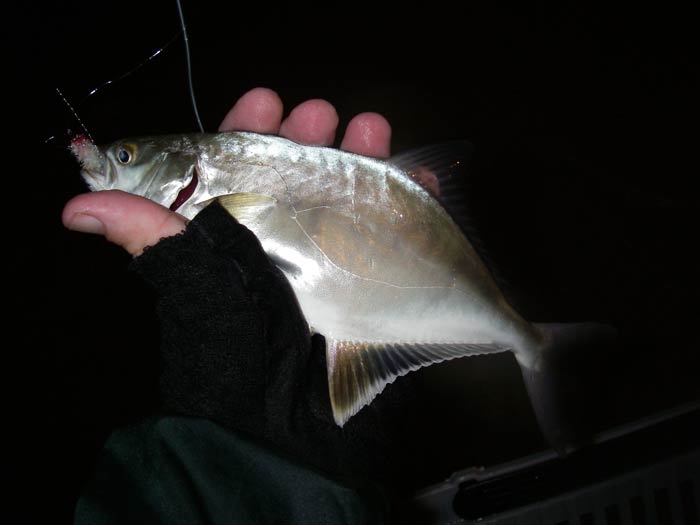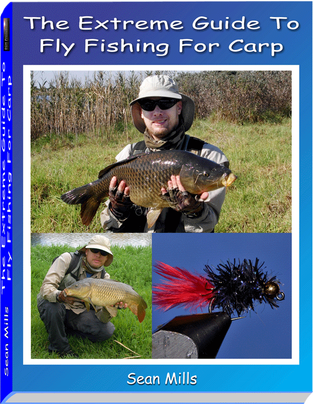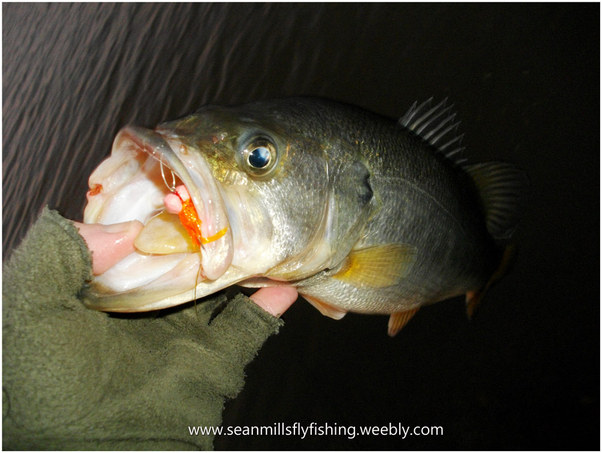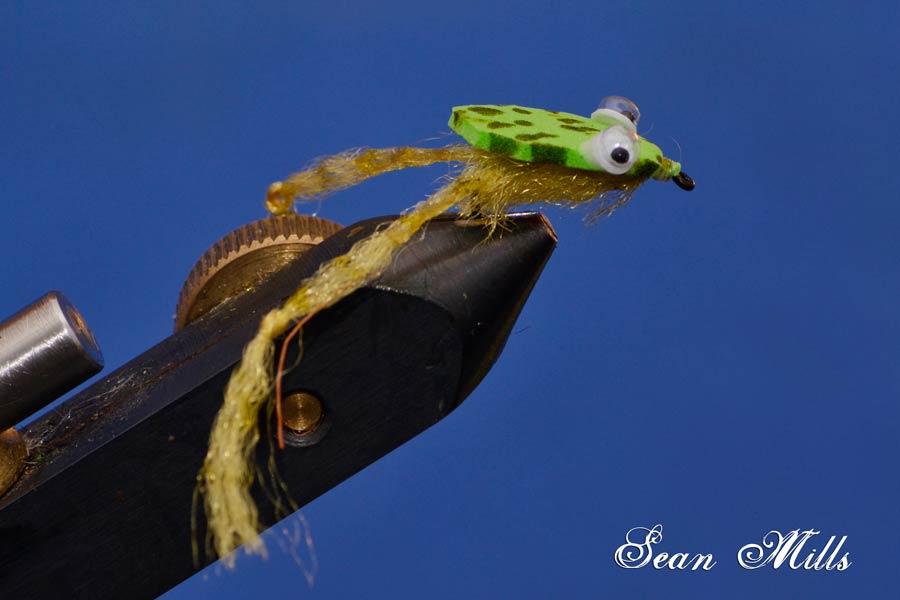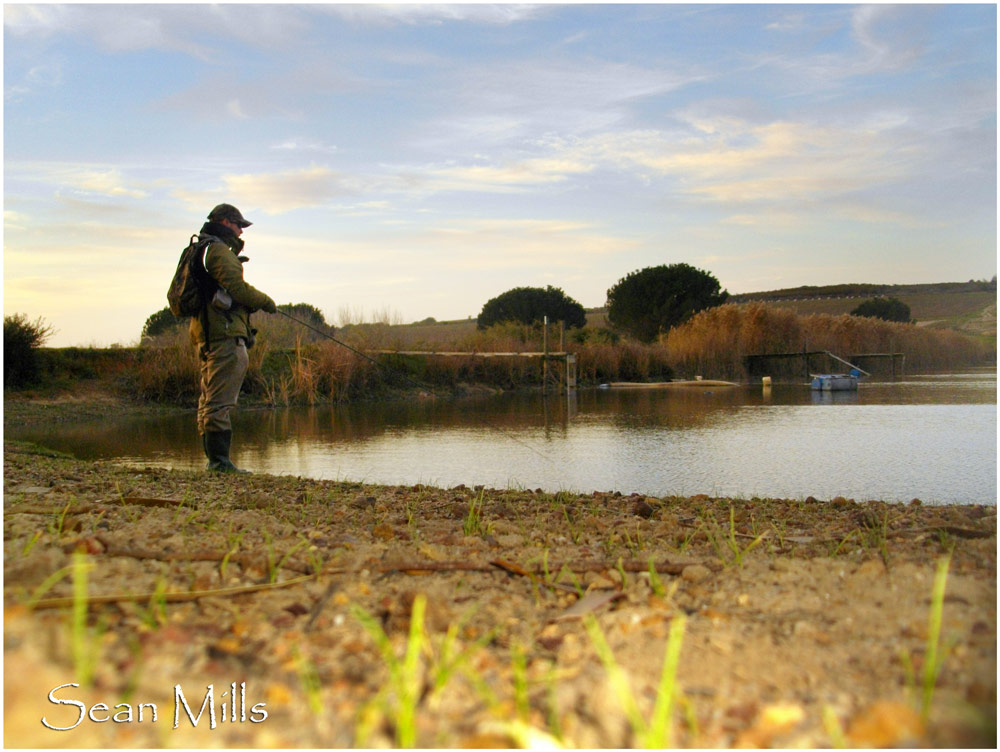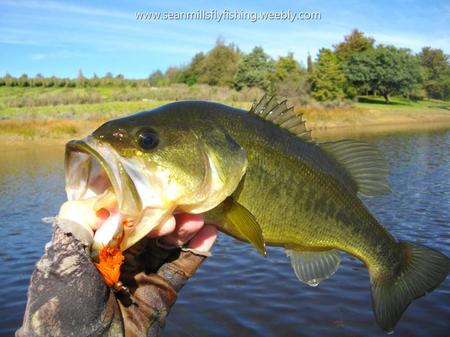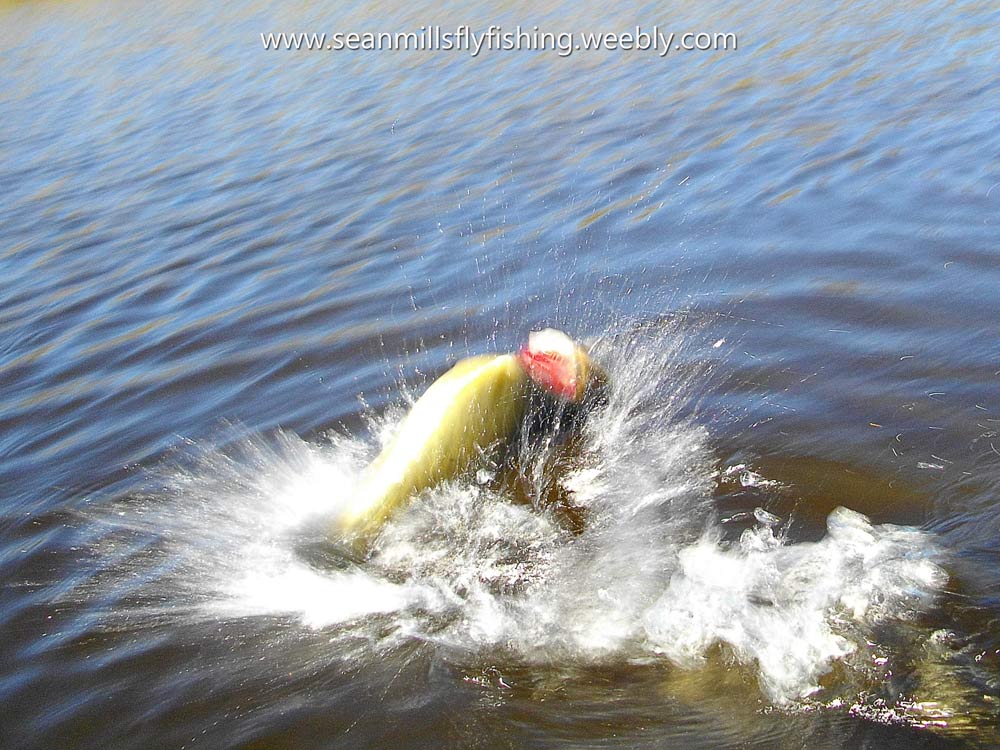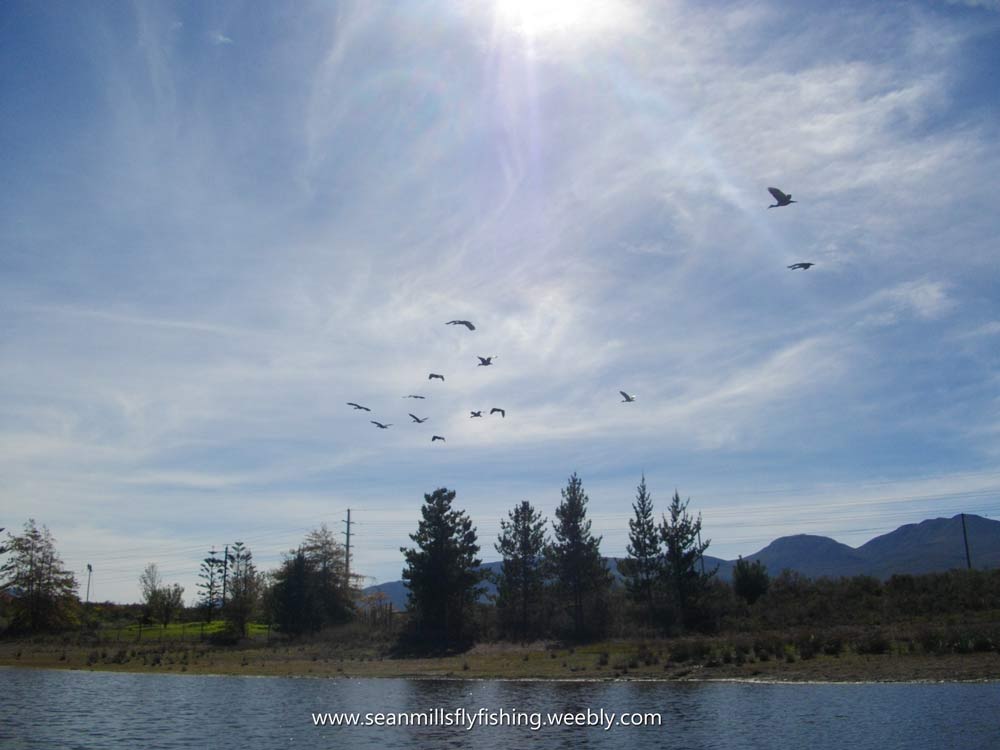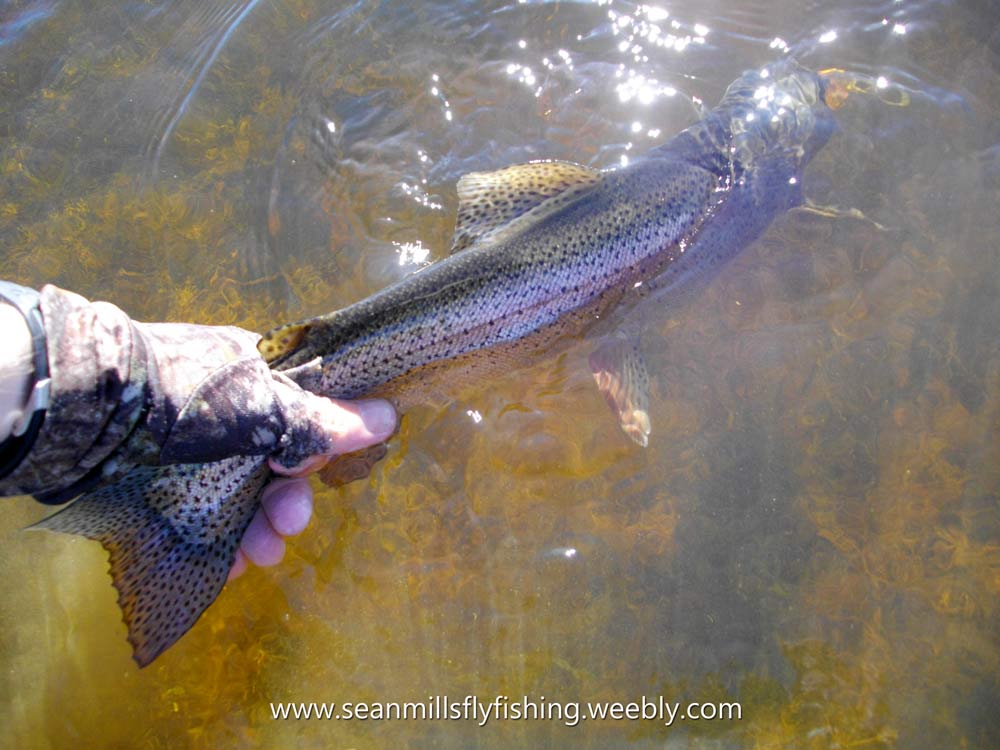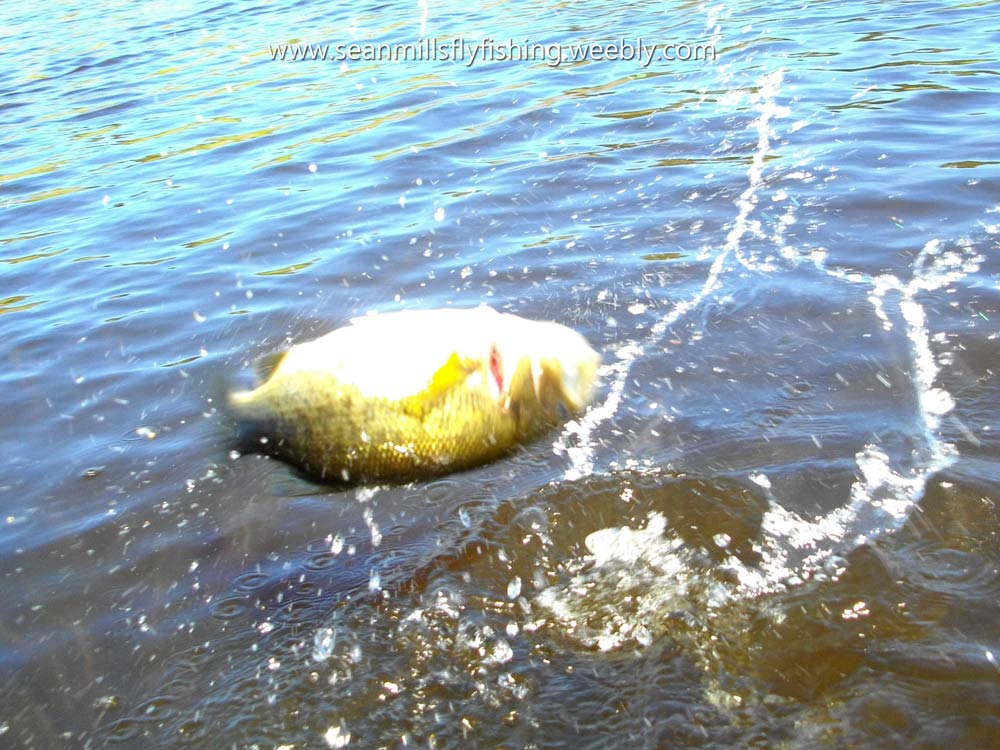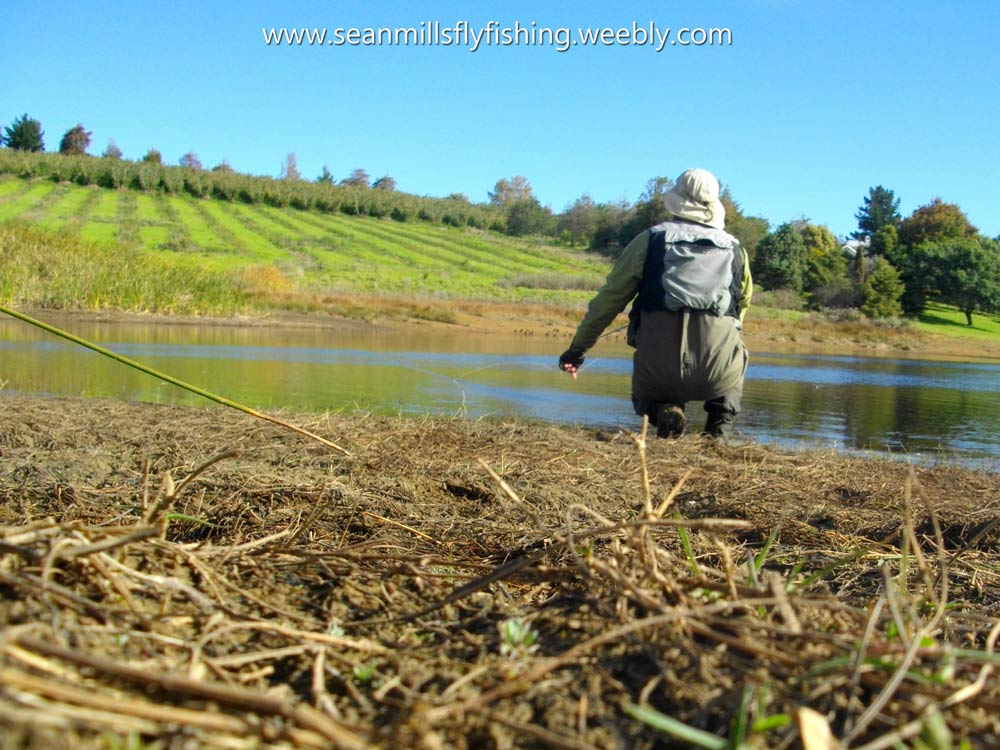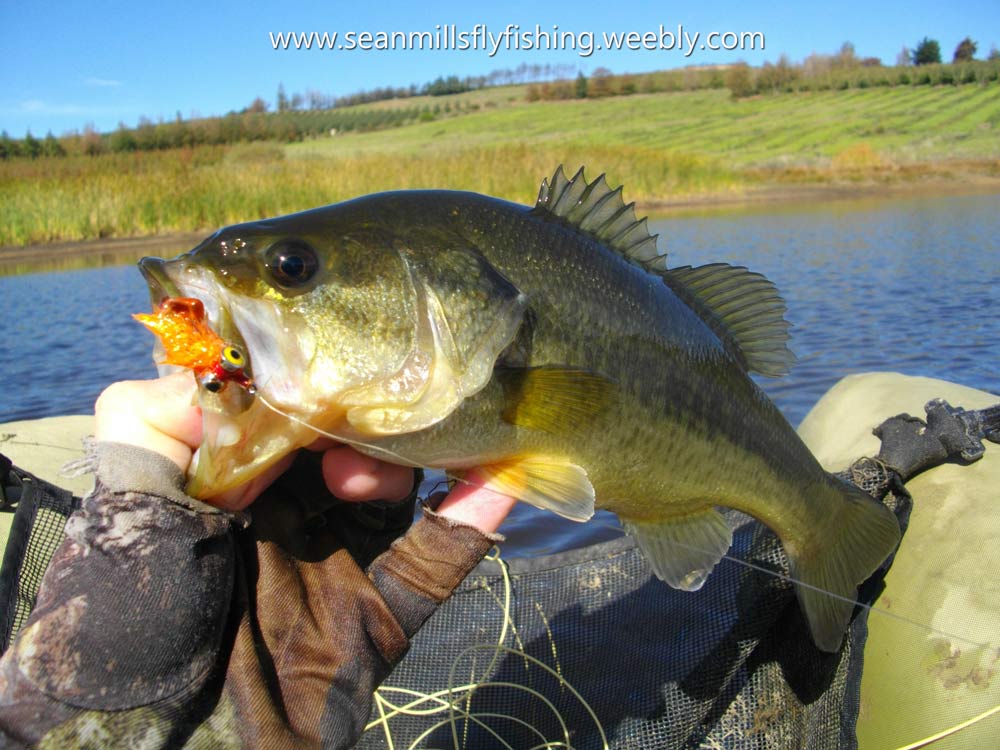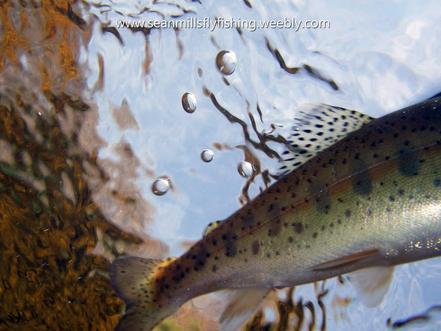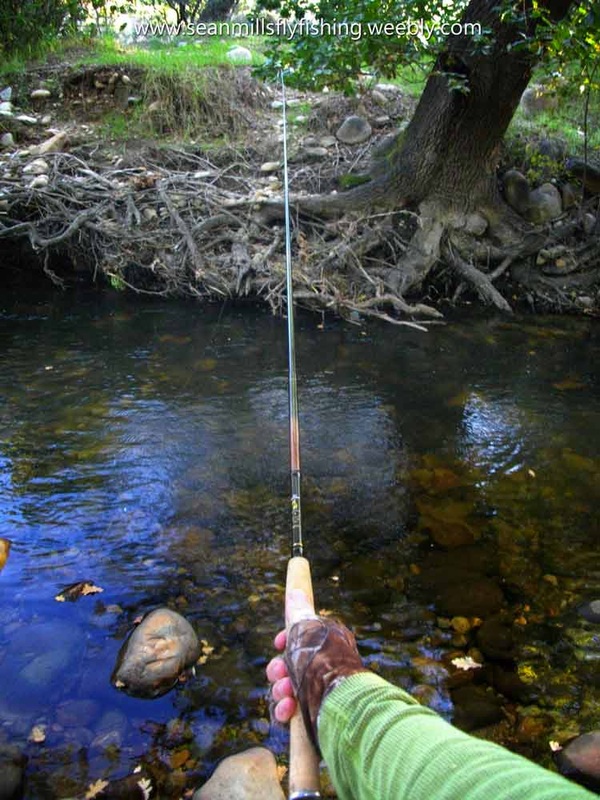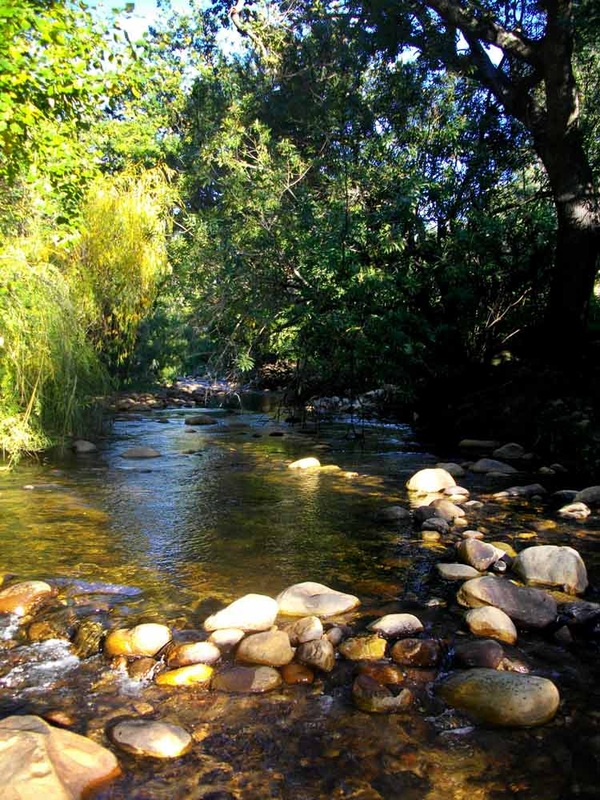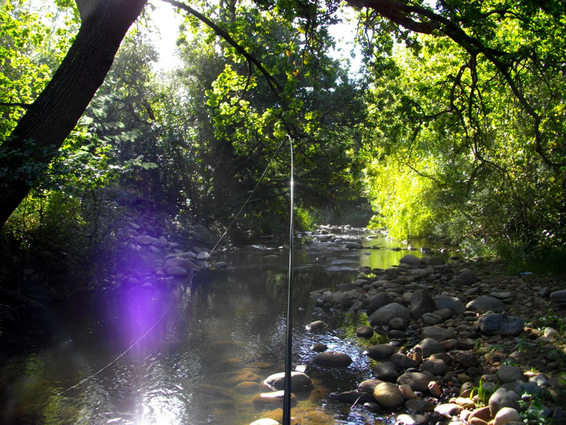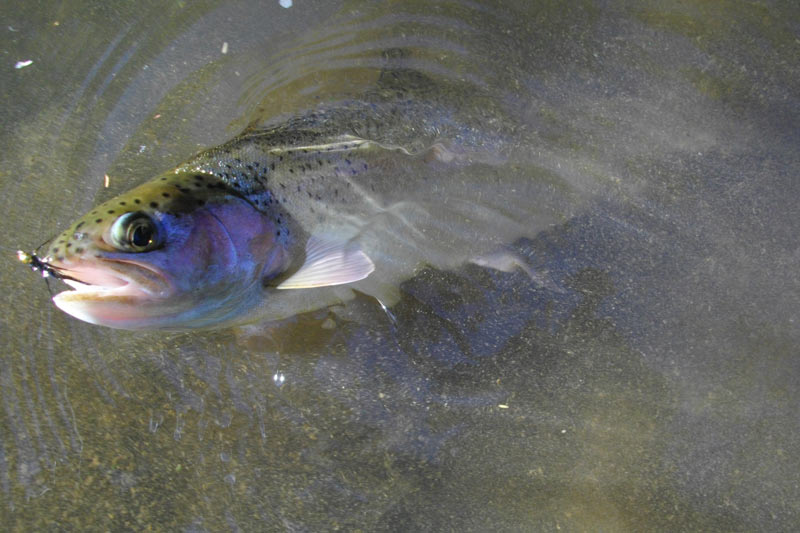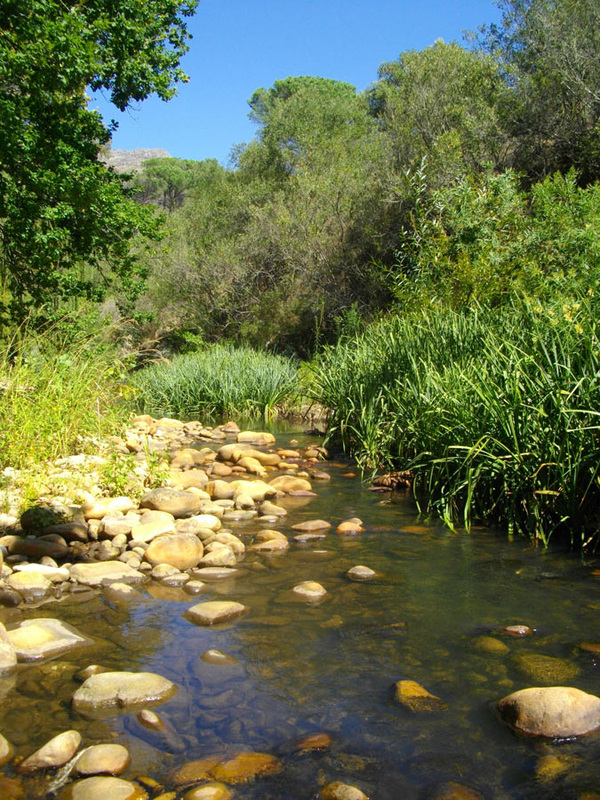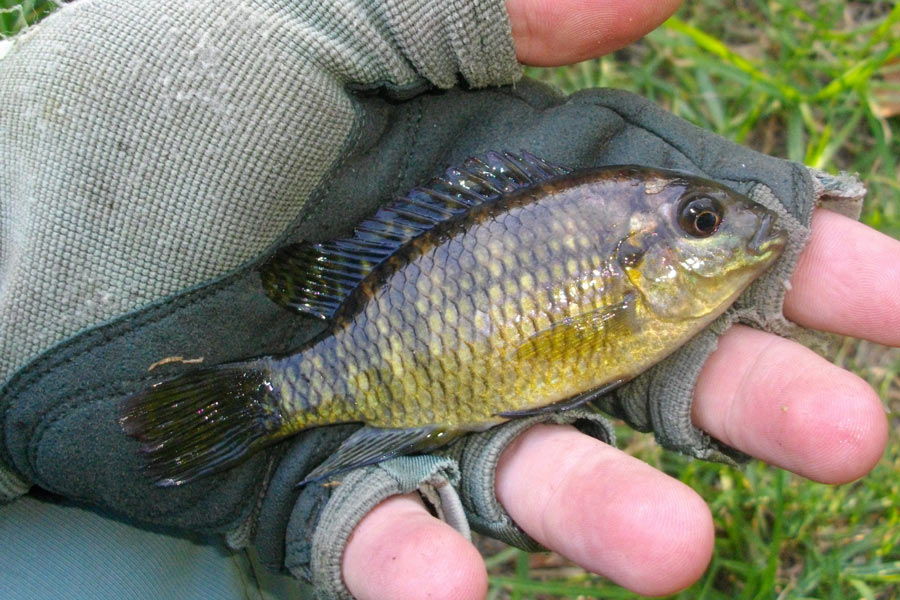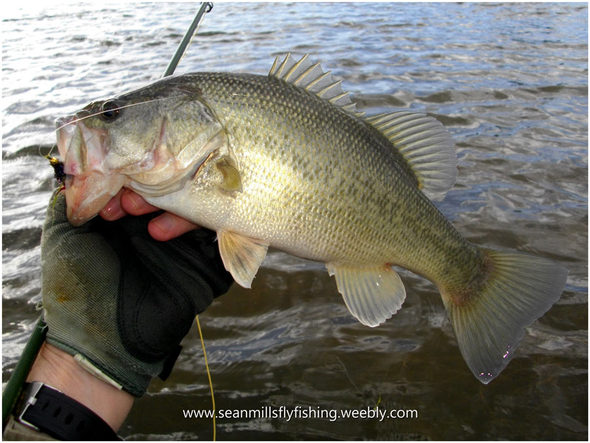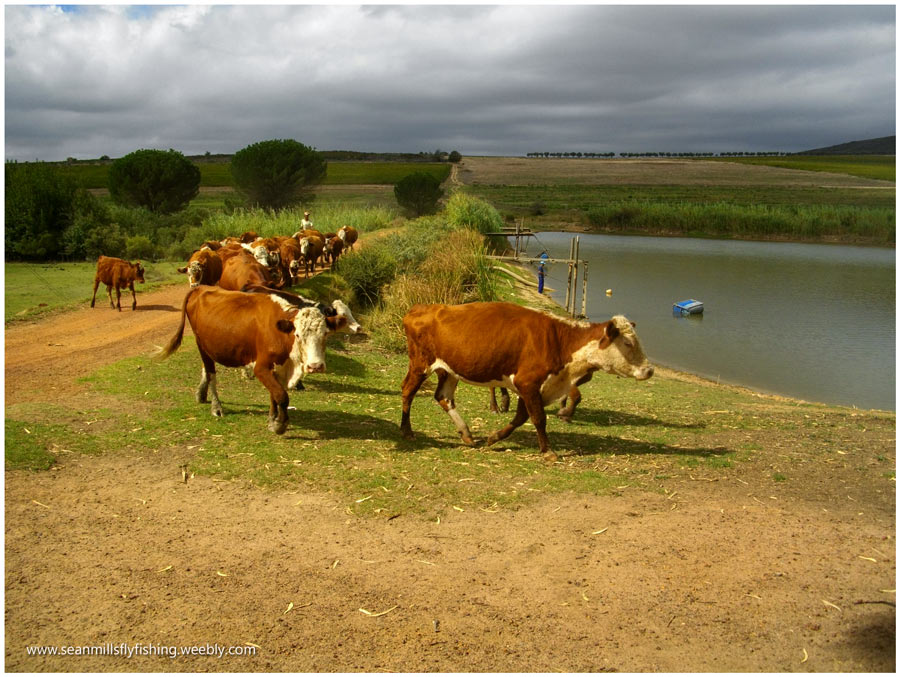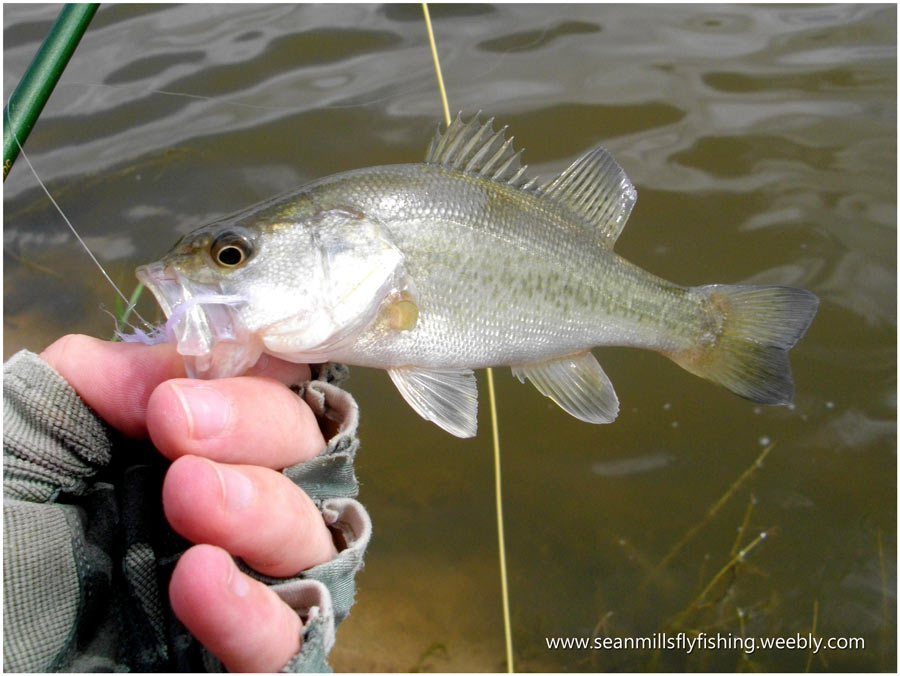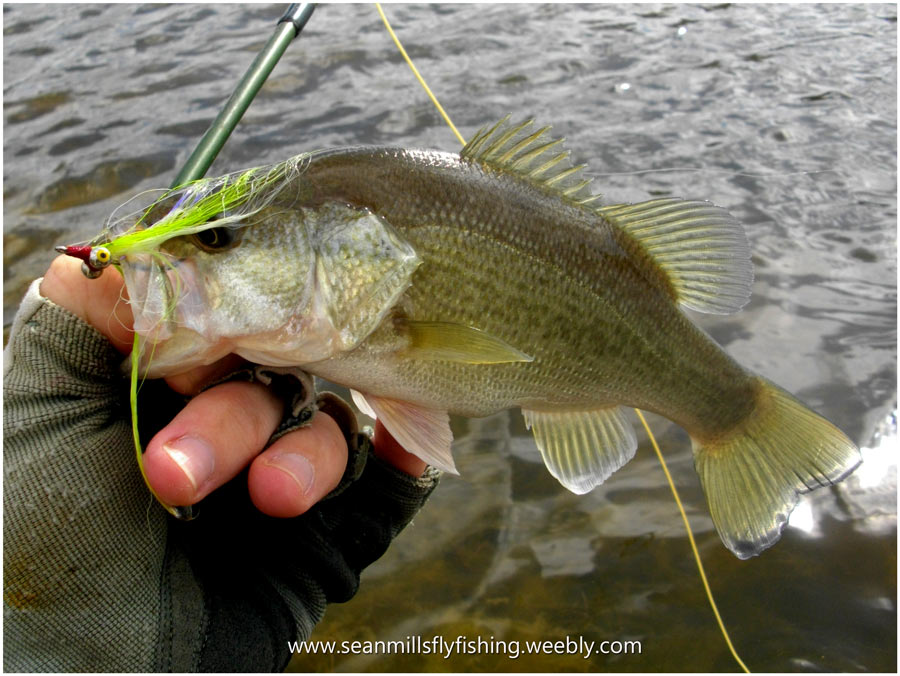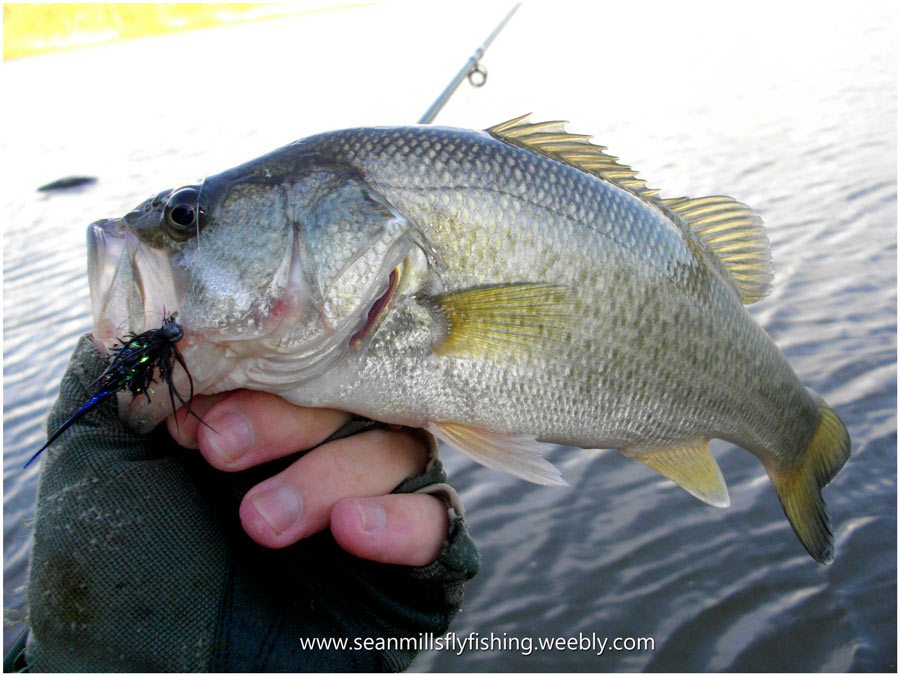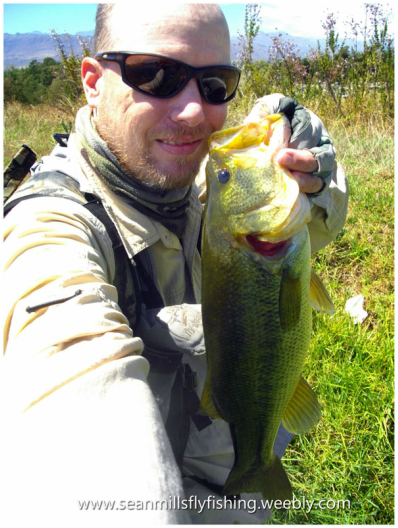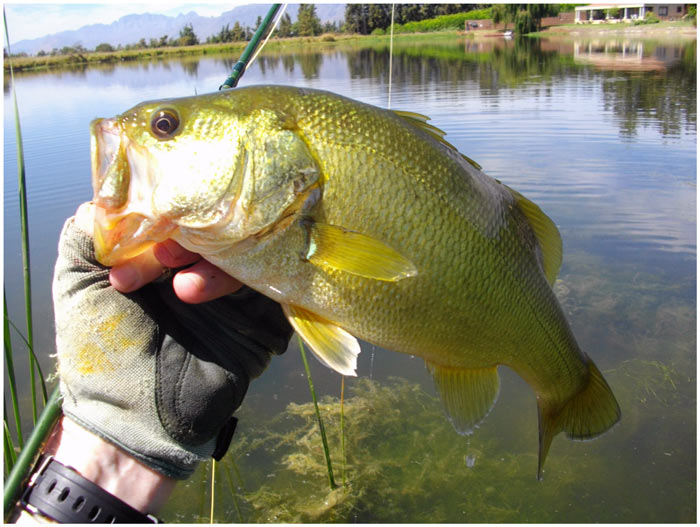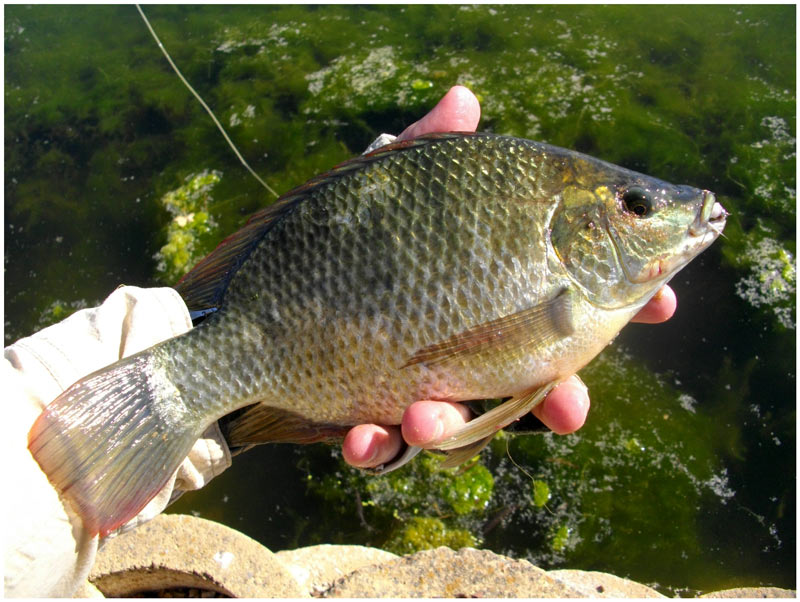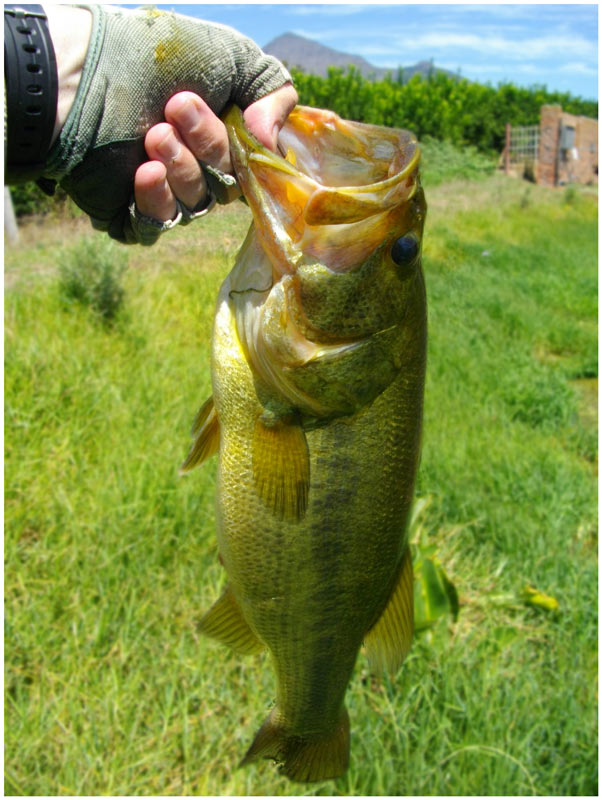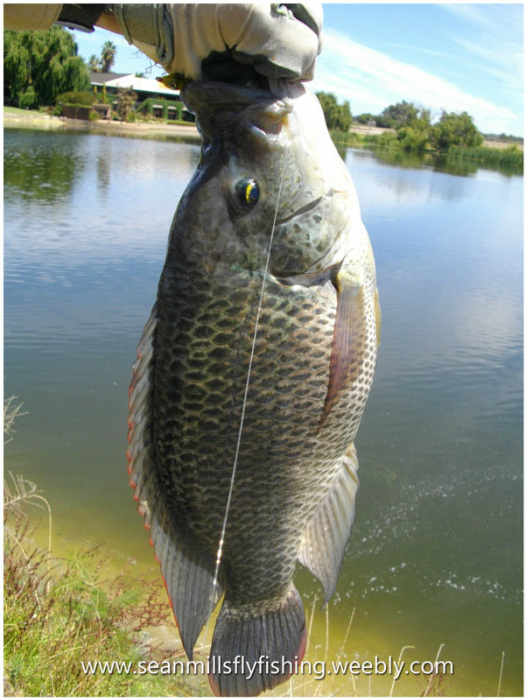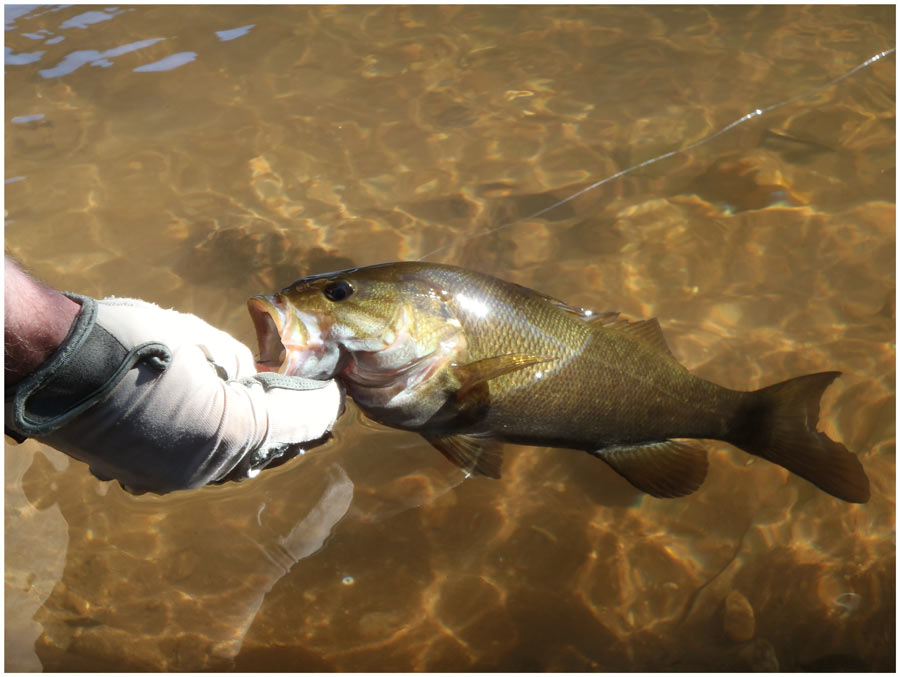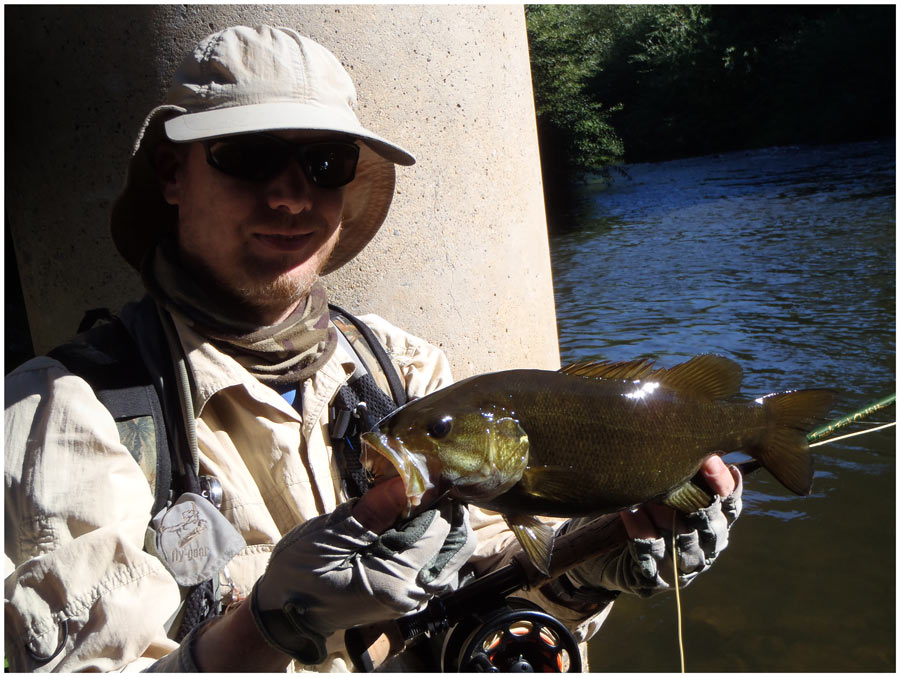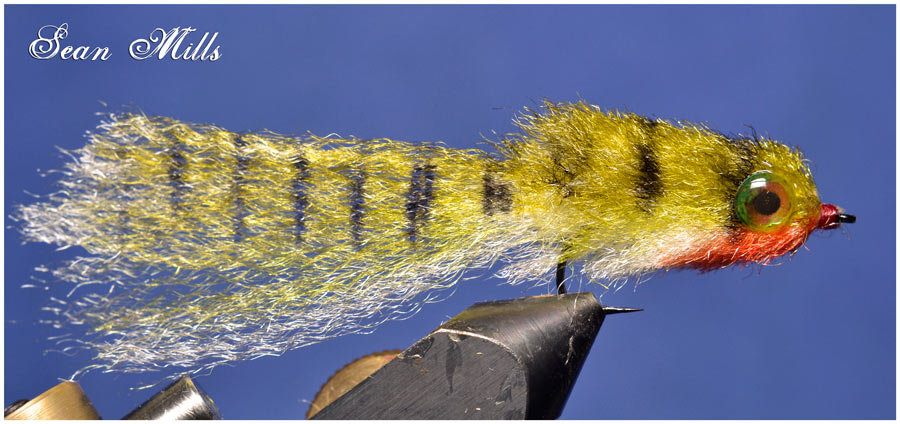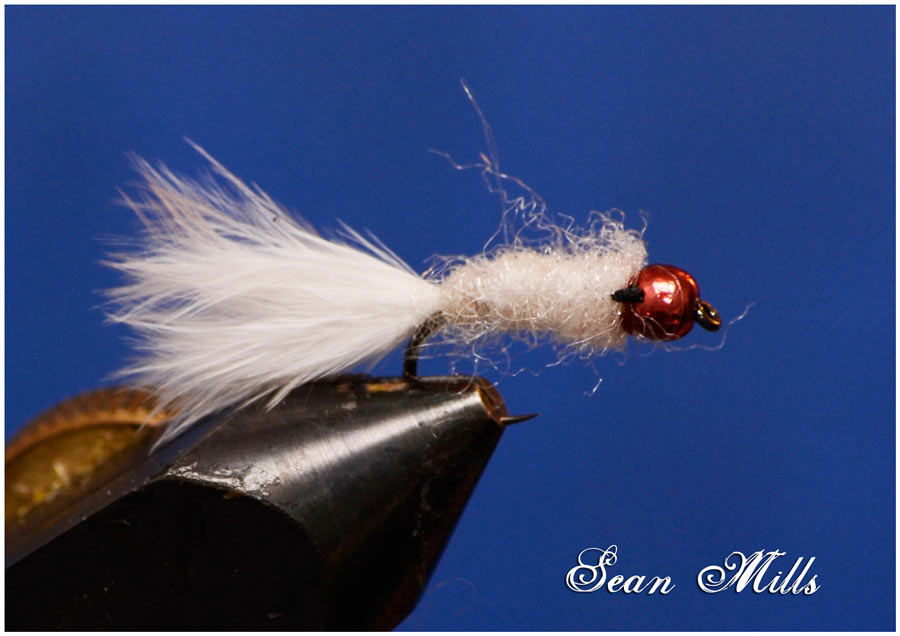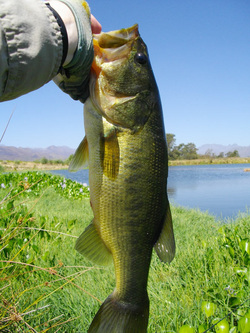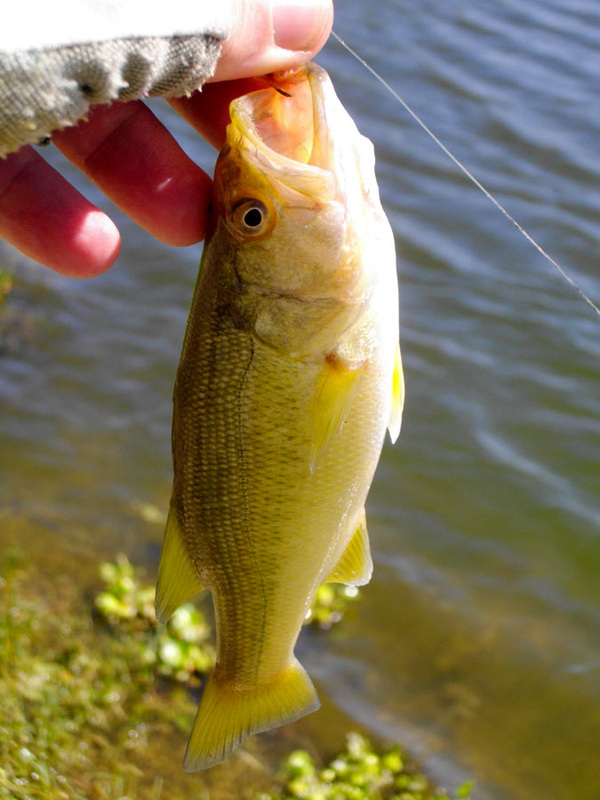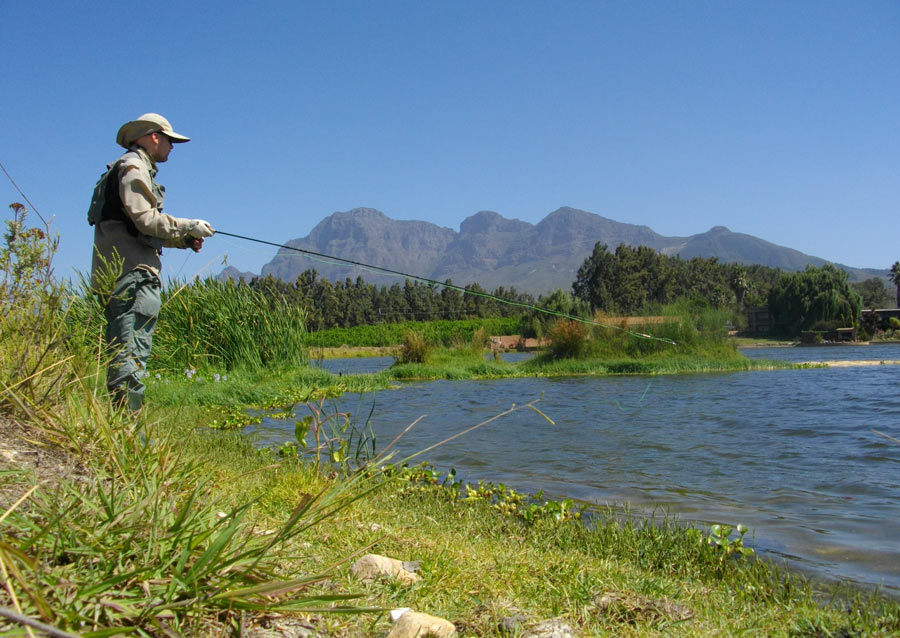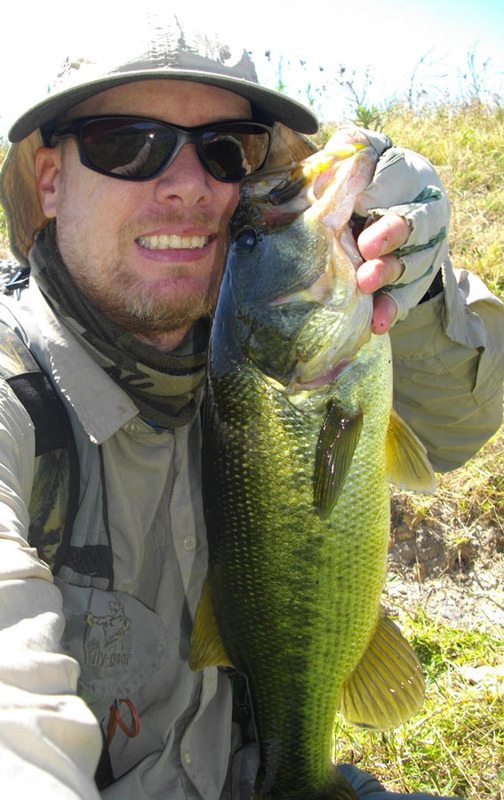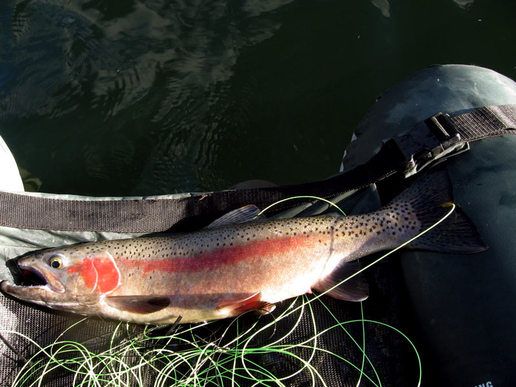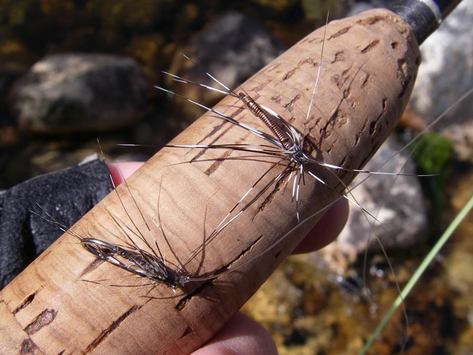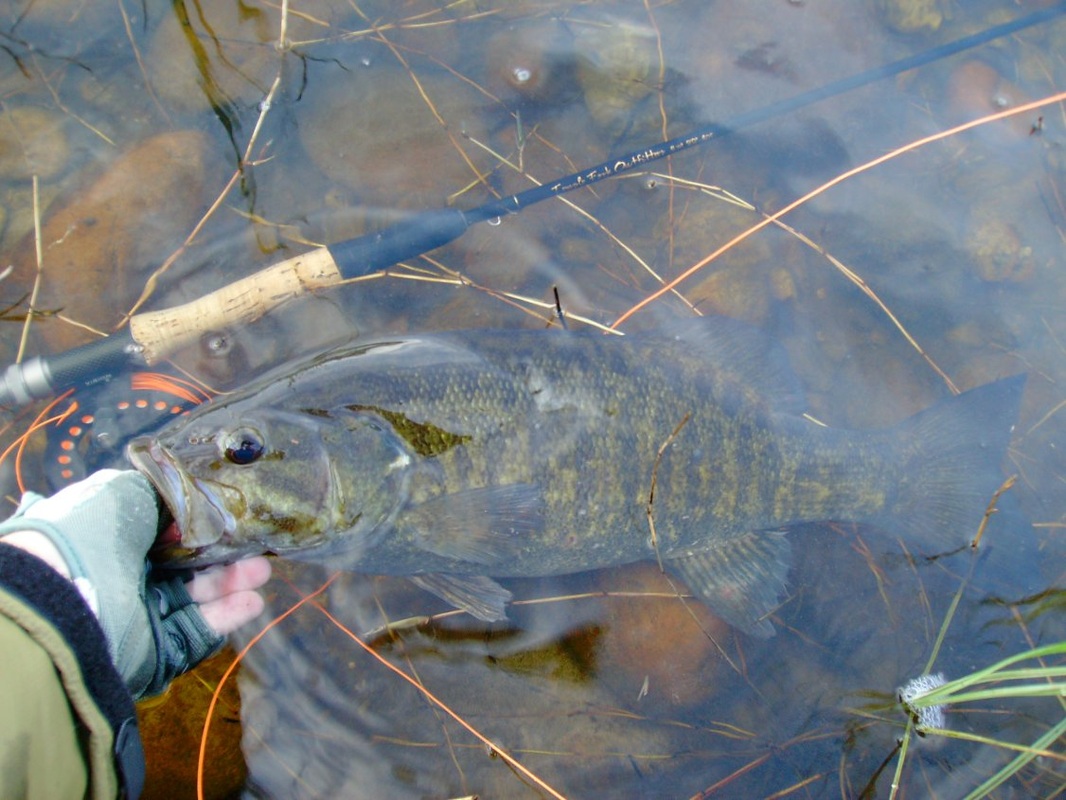The Western Cape region
is well known for producing two main fly fishing species, the elf/shad
and the leerfish/garrick. These fish make up the majority of the fly
fishery in the area. Off shore, yellowtail and Cape snoek are the two
main species targeted. In addition to these game fish, it is also
possible to catch mackerel, kob, mullet, spotted grunter, white
steenbras; white stumpnose, cape moonies and even tuna if you are
adventurous enough.
I really started to fish hard
for salt water fish recently and have been amazed by my results. I have
had 25 fish days more than once and have discovered a new fishery as
well in maasbanker (horse mackerel), which are plentiful in summer and
bite at night around spot lighted areas. In the Cape you can land just
about anything from a 10cm moonie or mullet to a 20 kg leerfish or a 70
kg tuna on fly!
In the Cape we have two seasons,
winter and summer and the fish that you are likely to catch in the area
are largely dictated by the time of year. Winter fish would be described
as snoek, mullet, white stumpnose and galjoen if you are that lucky. In
summer, the warm water game fish come into the bay from further east
and hang around for a while. Now the problem with salt water fly fishing
is quite simple really. If there are fish in the area you are fishing,
then you more than likely will get a chase at the very least. On the
other hand, it is quite likely that the fish may be in a warmer current
around the coast or have just passed through before you got there! You
just never know.
One day while fly fishing for carp
at Sandvlei, I decided to quickly try for leerfish, even though it
looked like none where around. Quite to my surprise, almost every cast
produced a chase or a hit and I landed a few small fish. The next day I
was back with a few friends and we flogged the water for hours without
luck. On another occasion, I fished a whole morning at the Klein Rivier
lagoon near Hermanus with no luck and then decided to look at the beach.
There was a south easterly wind blowing which in that spot made casting
easy. I found a nice sand gully close to shore and on the first cast
had two takes. I was stunned and quickly cast out again. To my surprise I
hooked and landed a 25 cm elf. Then I noticed that the gully was full
of them and for the next 2 hours I was treated to some hectic sport. If I
had packed it in early, I would never have found those fish.
Here is a tip that I have found for leerfish and elf on fly. The earlier
you get to the water and start fishing, the better. There are several
reasons for this. Firstly, there are fewer people and boats around to
scare fish and secondly this is the best feeding time for these two
species irrespective of the state of the tide.
The
tackle that you need for this type of fishing is an 8 weight fast action
rod about 9 feet long, saltwater proof reel capable of taking 200
meters of 20 pound backing (just for incase) and an intermediate fly
line. This type of line casts the best, is the most versatile and lasts
the longest in the harsh saltwater environment. It also fishes well in
the waves when fishing the surf zone. A floating fly line has the habit
of being washed back quicker than you can retrieve it, while a slow
sinking line sinks under the wave action.
When you
get home after a trip, take the reel off the rod, wipe it clean with a
damp cloth and spray Tackle Guard or silicone spray on it to get rid of
the salt water and help keep corrosion away. The fly line should be
wiped clean with a damp cloth as well and then re-spooled on to the
reel. Wipe the rod eyes and reel seat with the cloth, allow drying and
then packing everything away. If you fail to do this, you could pick up
corrosion problems very quickly.
Leaders and tippet
configuration when targeting game fish species do not have to be
complicated. The leader can be from 6 to 7 feet long and should be
composed of a thick butt section (attached to the fly line with a
braided loop or with an Albright knot, about 100 cm long to which the
class tippet should be attached. The class tippet is the line that you
will actually play the fish with and should break first in the event
that the fly gets snagged or the fish wins. It should be about 12 pounds
(5.5 kilograms) for normal saltwater fly fishing. When targeting spooky
species like grunter, a standard knotless tapered leader about 9 feet
long and with a breaking strain of 8 pounds (3.5 kilograms) is ideal
(although making it even longer is recommended).
A
shock or bite tippet is used when targeting fish with sharp teeth or
with sharp gill plates like skipkjack and elf. For elf, a short section
of stainless steel, single strand wire about 9 kilogram breaking
strength is ideal. I don’t like using wire and prefer using an elf style
fly which has a long shank and the materials tied in at the bend of the
hook which gives a form of bite trace effect.
For skipjack
and large leervis, a section of 10 to 15 kilogram nylon monofilament or
fluorocarbon attached to the fly with a loop knot is ideal.
In addition-a pair of polarized sunglasses is a great asset
because it will allow you to spot bait fish or game fish under the
water, eliminate most surface glare causing less strain on your eyes and
allow you to spot fish holding features like channels, weed beds, drop
off’s , gullies etc.
Some form of “stripping”
basket to hold your free fly line in is an essential item of tackle. The
best type is the supermarket plastic basket held around the waist with a
belt or bungee cord. Cable ties should be used on the bottom of the
basket to stop the line from tangling during casting. Six is a standard
number to use and they should be about 10 cm. long and evenly spaced
around the basket.
When fly fishing for snoek off a
boat, a very fast sinking fly line will be needed. A type 7 or lead
core line is the best to use. Sometimes the snoek will be hitting fish
near the surface, in which case an intermediate fly line will work, but
this is the exception to the rule. Snoek like flashy flies that are
quite colourful and will savage them, so take plenty of spares.
There are two basic ways to retrieve the fly. The first is to
hold the rod in your casting hand with the tip just above the surface of
the water, while using your “stripping” or none casting hand to
retrieve the line in long or short “strips”. The other (used for ultra
fast retrieves), is done by tucking the rod butt under your casting arm,
arm pit, which allows the use of both hands to bring line in. This
takes some practice to perfect.
For quick
retrieves, the latter is the most economical and least tiring. For me
salt water fly fishing is all about economy of motion, both in casting
and stripping the line in. The easier you do it for extended periods of
time, the better your chances of success. When targeting bottom feeders
or when using slower retrieves (when representing wounded fish or
swimming squid or prawns), the former retrieve is better. Retrieve
speeds can vary from very fast, for leerfish, to almost dead drift, for
grunter. Varying the retrieve speed during the day is a very good idea
and will result in more takes. There is however one golden rule when fly
fishing for game fish, never strike until you feel the fish is pulling
on the line! Leerfish will often hit your fly two or even three times
before really latching on and if you strike to soon, the fish will stop
chasing. Just keep stripping until you feel that the fish is on before
doing a strip strike. Then make sure that the loose line does not tangle
as the fish heads off. I recently started using circle hooks on
leerfish and the results have been spectacular! These fish hook
themselves on a circle hook and you loose very few if any!
Here are the retrieve speeds for the various species:
Leerfish - medium to very fast, but I have caught most fish on a medium erratic retrieve.
Elf - medium.
Kob - slow to medium and always on the bottom.
Mullet - dead drift to medium (sometimes fast).
Spotted grunter - dead drift to slow medium.
White steenbras - dead drift to medium.
White stumpnose - dead drift to medium.
Sandsharks - slow to medium and on the bottom.
Snoek - slow to fast and usually as deep as possible.
Yellowtail - very fast.
Skipjack - dead drift to very fast
Cape moonies - dead drift to medium
Galjoen - dead drift to slow
Maasbanker - slow to medium
The flies that work well in the Cape include Clouser minnow,
salty bugger, flipper, crease fly, white foam popper, crazy charlie,
Lefty’s deceiver, silicone mullet. You can use these flies in size 4 to
2/0 and best colours are white and white and chartreuse.
Here are the venues that fly fish the best in the Western Cape.
You will see that most of them are estuaries. This is because the Cape
coast has many rocky spots that are overgrown with kelp or see weed, and
these spots are just about impossible to fly fish effectively unless
you have access to a boat. Many of the beaches are also too shallow for
too far and thus do not hold that many game fish close in.
Langebaan lagoon-West coast
This large body of water is best fished from a boat and the fish
can be hard to locate. The best way is to spot birds feeding. The
sandsharks are abundant all over in very shallow water and can even be
caught in the winter months.
Fish species - elf, yellowtail, leerfish, white stumpnose and sandsharks, maasbanker.
Milnerton lagoon-Cape Town
This lagoon can produce good catches but is highly variable. The
area around Woodbridge Island produces the best results. Fishing close
to anglers pumping prawns can produce excellent results.
Fish species - elf, leerfish, mullet and some kob.
Sandvlei-Muizenburg
This lagoon is often closed off to the sea in summer and is home
to some of the biggest Leerfish in the area. It is not easy to fish but
the best areas are close to the mouth in the area of the foot bridge and
the best time is sunrise. You can also fish from a float tube in the
Marina Da Gama channels which are protected from the wind. Landing a
leerfish from a float tube is a unique experience!
The mullet
also grow very big in this lagoon. Try large white streamers for them
close to weed beds. For the averaged size mullet, try a #14 hares ear
nymph.
Fish species - leerfish, mullet, elf.
Strand: Gordons bay beaches
Best fished in a south easter, the gullies in the rocks can be
fished at low tide and the beach at high tide. This is an unpredictable
venue but has often produced spectacular results. You can also try in
the harbour at Gordons Bay or at Harbour Island. Also try at the
Pavilion at night for maasbanker.
Fish species - leerfish, elf, kob, mullet, maasbanker, white steenbras.
Bot river lagoon
This large lagoon fishes best in spring after heavy rains when
the mouth opens up, forming a distinct channel. It is not easy to fish
in windy conditions, so check the weather forecast first. Best fished
from a boat.
Fish species - leerfish, mullet, elf, kob, white stumpnose, white steenbras.
Kleinmond lagoon
This lagoon is best fished any time when there are no people
around! There are leerfish and mullet around and they can be caught
early in the morning around the drop-offs.
Fish Species - leerfish, elf and mullet
Kleinrivier lagoon (Hermanus) and beach
This large body of water has very distinct holes and channels,
which is where the fish hold. It is also best fished from a boat, but
the main channel can be accessed at the mouth and at Maanskyn Baai. Best
fished early or late. The sandy gullies on the beach to the right of
the mouth can produce lots of elf in the season. The South Easterly (the
prevailing wind in summer) blows from behind off the beach, which makes
casting a pleasure. You can also catch maasbanker in the new Harbour as
well as juvenile snoek and sometimes elf.
Fish species - leerfish, elf, kob, white stumpnose, white steenbras, mullet.
De Mond estuary
This is a nature reserve close to Struisbaai. Visiting hours are
from 7am to about 4 pm. It is a small and pristine estuary which can
produce excellent results. Most of the leerfish are small, but there are
big spotted grunter and mullet in the estuary. You can also catch some
respectable kob in this estuary!
Fish species - leerfish, elf, mullet, white stumpnose, cape stumpnose, kob, spotted grunter.
Struisbaai harbour and beaches
The harbour can produce very good catches of elf at sunrise as
well as the species listed and the gullies are also worth a try.
Fish species - maasbanker, elf, leerfish, spotted grunter, sandsharks, kob, white steenbras, cape stumpnose.
Breede river mouth
This is a very large piece of water and probably has the most
fish in the Western Cape region. It is best fished from a boat casting
along the drop offs into deeper water. There are big sharks in the
river, so beware of deep wading!
Fish species - leerfish, elf, kob, spotted grunter, mullet, cape mooney, cape stumpnose and sandsharks.
Stilbaai- estuary and surf
This popular holiday resort can provide excellent fishing year
round. It has all types of fishable water from the estuary to rocky
gullies and beach spots. The flat rocks and calm surf conditions make
fly fishing this region brilliant!
Fish Species -
spotted grunter, elf, kob, leerfish, wilderperd, cape stumpnose, cape
moonie, dassie, mullet, baardman, fransmadam, hottentot and sandsharks.
Check out my DVD "Saltwater fly fishing the Western Cape with Sean Mills"
